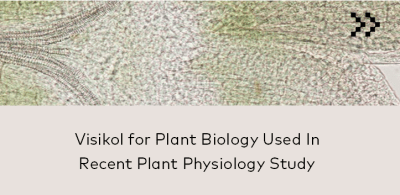
The functions of Arabidopsis ABCA10, an endoplasmic reticulum-localized ATP-binding cassette protein implicated in endosperm growth and seed storage oil accumulation in Arabidopsis thaliana, were explored in a recent study undertaken by Dr. Shin et al. ATP-binding cassette (ABC) proteins are found in all living organisms, and they are divided into nine subfamilies based on their sequence similarity. A-type ABC (ABCA) subfamily genes are found in plant genomes, but their physiological and biochemical roles are unknown, according to Shin et al. But one thing is evident: the abundance of ABCA genes in oilseed plants suggests a possible role in lipid metabolism and accumulation, as shown by prior research.
Shin et al. examined dry seeds harvested from two independent ABCA10 loss-of-function mutants to determine the function of ABCA10 during seed development and revealed that ABCA10 transcripts in mutant siliques were virtually undetectable when compared to their respective wild-types. In addition, a high fraction of the mutant seeds were small/and/or shrunken and appeared abnormal; additional tests were conducted, and the significance of ABCA10 in normal seed formation was further supported. The weights and contents of TAGs, the main seed storage lipid, proteins, and carbohydrates were collected from seeds of wild-type ABCA10, a loss-of-function mutant, and two complemented lines. Shin et al. reported that the loss of ABCA10 altered the profile of fatty acids in TAGs, and the loss of function mutant seeds contained lower levels of proteins and carbohydrates than the wild type suggesting that ABCA10 is required for the normal accumulation of the major seed reserves: lipids, proteins, and carbohydrates. In addition, Shin et al. assessed the transcript levels of ABCA10 and the morphology of developing seeds in the wild type and ABCA10 loss of function mutant to see at which stages of seed development ABC10 is expressed. Their findings suggest that ABCA10 is required for the early stages of seed development. Moreover, Shin et al. investigated the spatial expression pattern of ABCA10 in complementation lines of loss-of-function mutants that express ABCA10-GUS under its own promoter, which GUS signal was detected in ovules of open flowers and seeds at early developmental stages, but not in anthers or pollens; and the signal was amplified in the ovules one day after flowering (annotated as 1 DAF), and the signal increased in the central cell, and by 2 DAF, GUS staining covered the entire young seed; this data raises the likelihood that ABCA10 functions in the female gametophyte and early developing seeds, particularly in the endosperm. GUS staining of developing seeds was accomplished by infiltrating young siliques in GUS staining solution, clearing chlorophyll, and then mounting siliques in Visikol for Plant Biology reagent, where GUS staining was observed and imaged. Shin et al. used fluorescent protein tagging quantification to investigate the subcellular localization of ABCA10 in transgenic plants, revealing that ABCA10 functions at the ER membrane.
Overall, Shin et al. emphasize the importance of an ABCA protein, specifically ABCA10, for normal endosperm and embryo development during the early stages of seed development. Visikol offers a wide range of tissue clearing reagents for transparentizing biological tissues and cell models, as well as advanced drug discovery solutions such as 3D cell culture assays and tissue imaging high content screening, AI solutions for histological analysis of tissue sections, and much more. To learn more about Visikol’s services, please contact us.
